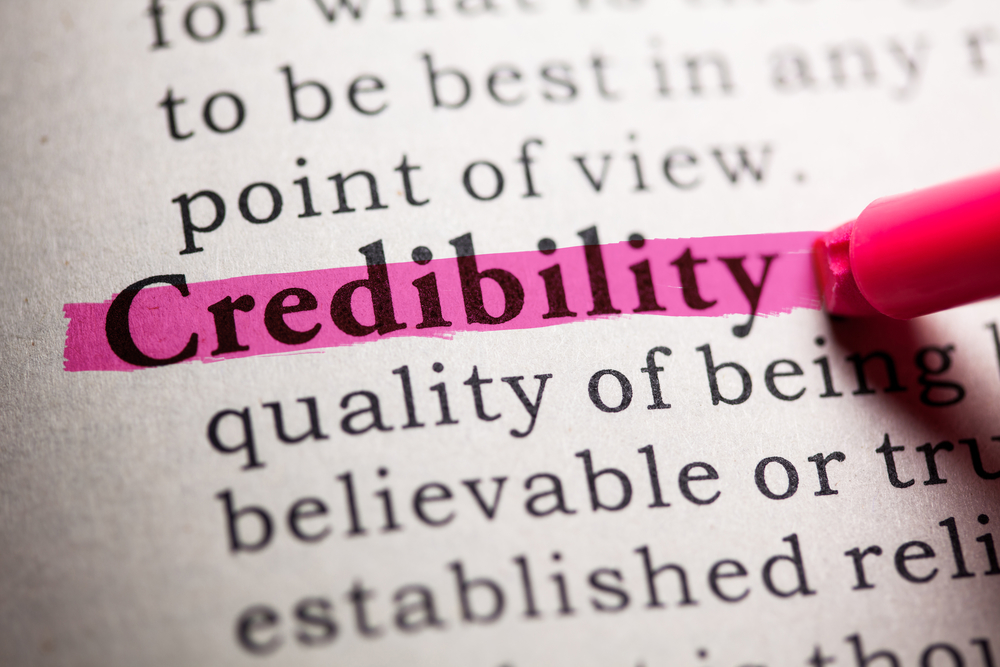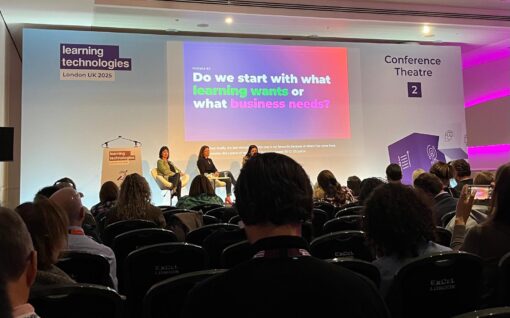Why credibility matters

Boring, predictable, repetitive and lacking in credibility – nobody wants to read content like that and nobody wants to be pushing out content like that. But it is precisely what a lot of people think about branded content, according to research by the content marketing company Raconteur Agency. Its report, called The Elusive C-suite: Content that Cuts Through, found that 51% of C-suite executives think content produced by brands lacks credibility, with 71% saying it is boring, expected and repetitive.
Credibility is a key word for us at Insights Media. Above all else, content has to be credible. If it isn’t, what’s the point in it? Producing, curating or sharing content that isn’t credible is likely to do more harm than good.
Let’s think about what credibility means for a minute. It is linked to several other words, such as trust, reputation, reliability, expertise, integrity, validity and quality. It is defined by the Oxford English Dictionary as ‘the quality of being trusted and believed in’. Wikipedia talks about credibility in terms of trustworthiness and expertise, both on a subjective and an objective level.
It almost doesn’t need to be said that credibility is critically important for any organisation, whether you operate in the private sector, public sector or voluntary sector. When credibility is damaged or lost altogether, it’s very hard for organisations to build it back up again. Take the financial crash of 2018 for example. It wasn’t just individual banks that suffered reputational damage – the entire financial sector suffered a huge loss in credibility that it is yet to recover from more than a decade later. According to the 13th report by The Ipsos Reputation Council, 44% of Council members say finance is one of the industries facing the greatest reputational challenges in Europe. One member is reported as saying “this crisis has not been solved yet, given that the image reconstruction process appears to be very slow”.
‘Image reconstruction process’ is an interesting choice of words and it relates to content and communications. How do you construct or reconstruct an image? By telling the world at large who you are, why you exist and what you do and by projecting the image that you want to be known for. It doesn’t tend to happen by accident – you communicate that image.
Credibility – or a lack of it – can make or break an organisation
Building the right image, a credible one, requires a sustained effort on the part of organisations, but getting it right is well worth the effort. Credibility – or a lack of it – can make or break an organisation and has a direct impact on organisational performance and productivity. Eight in ten council members participating in the Ipsos report said that reputation impacts on an organisation’s bottom line.
As Rupert Younger, director of the Oxford University Centre for Corporate Reputation, said in the Centre’s 10 year report, reputation and credibility are now at the forefront of every CEO’s mind: “Reputation has now become a hugely salient subject among organisations of all kinds – what it is, how it is built, enhanced, destroyed and recovered.” More about this can be read here.
So, what about content and how it can build and enhance credibility? CEOs, business leaders, content providers and communications and marketing teams are largely aware of the very important role that content and communications have to play in terms of building credibility. According to The 2018 State of Digital Content, a report by the research and advisory company, Altimeter, a significant number of companies (41%) can tie revenue impact directly to content. And what does the report say is the second most important objective for content strategy, after providing customers with accurate, helpful information for buying, using or repairing products? It’s inspiring trust and loyalty and demonstrating transparency.
A good content strategy focuses on engaging with the target audience. It’s about creating a strong narrative that all stakeholders (customers, investors, employees, industry analysts…) instantly get and believe in. It’s about a narrative that makes you stand out from your competitors and all the noise and makes you look credible. And it’s not a one off process – that narrative of credibility needs to be constantly communicated, updated and reinforced.
Fake news and misinformation
And the number one priority in terms of content has to be credibility. Yes, you don’t want it to be boring, predictable or repetitive, but most of all, you don’t want it to lack credibility.
The credibility of content is something else that is regularly under the spotlight these days: the quality, accuracy, veracity, reliability and provenance of the content that people produce, consume and share. There’s the ongoing debate about fake news and misinformation that has resulted in a proliferation of fact checking services. There’s the ongoing debate about the role of organisations such as Facebook in spreading content. And there have been several high profile content-related scandals, such as the News of the World phone hacking story that brought down the newspaper in 2011.
As a result, Gallup polls show that confidence in mass media has been steadily declining each year since 2007. However, as people have become increasingly aware of the unreliable quality and provenance of a lot of content published on the web and as the existence of journalism has come under threat, so have both parties come to appreciate the paramount importance of credibility.
According to a research article called the Credibility of Precision Journalism, there are three aspects to credibility:
- Clarity: how easily can article can be understood
- Accuracy: how well documented the information is
- Trustworthiness: how believable the information is
As content creators, curators and consultants at Insights Media, we firmly believe that credibility is key, whether the content is content marketing, journalism, copywriting, branded content or anything else. Whitepapers, articles, blog posts, video, podcasts – whatever the medium, it has to be credible.
We also firmly believe that content is more credible when it is based on solid principles of good journalism, whether it’s a piece of journalistic content or some other form of content. The Society of Professional Journalists’ (SPJ) code of ethics says professional integrity is the cornerstone of a journalist’s credibility. It is the same with copywriting, content consultancy, curation… SPJ gives a list of standards journalists should adhere to, starting with this:
Journalists should: take responsibility for the accuracy of their work. Verify information before releasing it. Use original sources wherever possible.
Any form of content should adhere to these principles but sadly, too often it doesn’t, particularly on the web. So much web content mentions research but doesn’t cite or provide a link to the actual source. Even when there is a link, it is often to another article that again isn’t linked to the original source.
The credibility – or lack of credibility – of content has become such a big issue that we decided to do something about it. That’s why we created our Customer Credibility Index, a tool to assess the credibility of content according to certain key indicators. Is external research used to back up and validate what is being said? If research is used, is it referenced accurately? Is content balanced, fair and informative? Is it interesting, engaging and relevant? Does it tell the target audience what it needs to hear in a way that they can relate to? And so on.
Just as journalists produce copy according to the golden rules of who, what, where, why, when and how, so do we. Is your content telling the full story, or only part of it? Will people read an article or watch a podcast and have unanswered questions at the end of it?
We think it is imperative that organisations think about the credibility of the content that they and their employees create, curate and share. This is not about relentlessly generating content that makes a noisy world even noisier. It’s about creating and curating content that is designed to have impact – the right kind of impact.
Content that is boring, predictable or repetitive will have little or no impact. It might even damage your brand. And content that lacks credibility? That’s the worst content sin of all.

